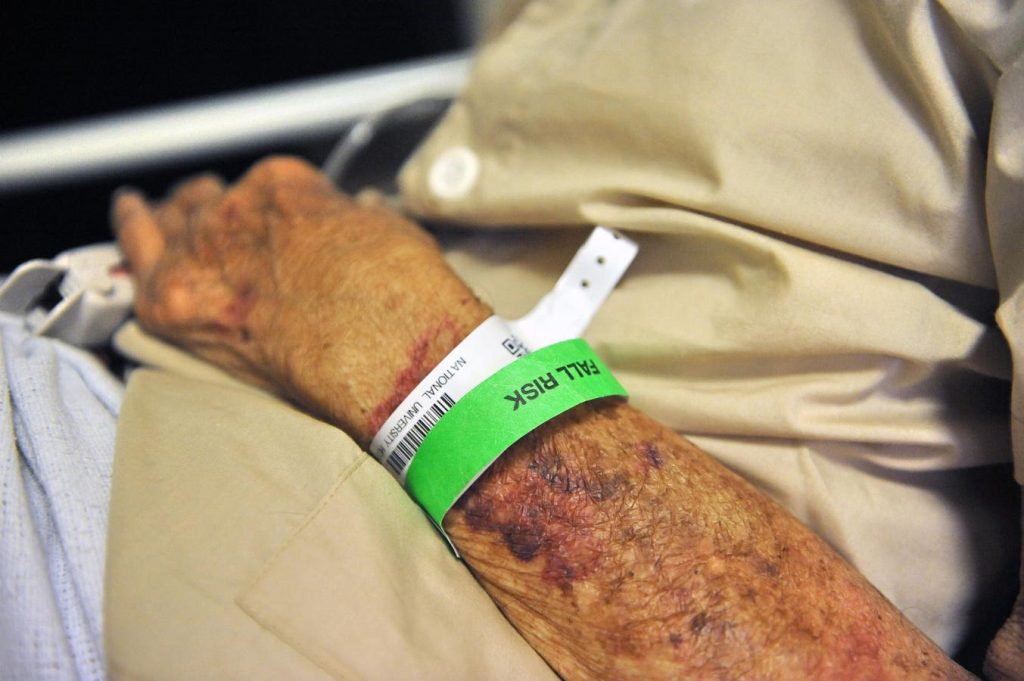Most people at or near retirement age will say they want to remain at home as long as possible. That means not going to a care home of any kind “with all those old people”. It sounds fine when one is 65 or so and in reasonably good health. But of course, aging takes its toll. Over time, when the person is in their 80s, aging in place can become an unrealistic challenge.
What We Don’t Like To Recognize
No one wants to admit that we are losing independence. Research tells us that at least a third of us are going to need help of some kind as we age, particularly over age 85. Maybe that number is higer than one third. How may folks do you know who are 85+ who do not have any health issues that increase their safety risks? Vision limitations and hearing loss are things some elders will admit to at first. But when it’s about remembering to pay bills, avoiding falls, and maintaining one’s hygiene, people can be much more reluctant to acknowledge their limitations. Here at AgingParents.com, we hear all about it from adult children. The aging parent, living alone, is not safe and they are worried sick. Mom, Dad or a grandparent just refuses to accept that the home they live in and having no one around is not safe for them anymore.
What Makes Aging In Place Unsafe?
There are many factors that affect safety. Here are a few of the common ones adult children tell us they worry about:
- Stairs. Climbing stairs safety and particularly going down them is a hazard for any elder who is unsteady on one’s feet. Stair chair lifts can help but they are an expensive fix that only addresses one safety issue at home.
- Memory loss. On the years-long path to dementia, many family members notice that mom can’t recall things that just happened recently. They have trouble keeping track of bills. They forget to pay. Things they need get cancelled for failure to pay. Living alone in place increases the risk of harm for anyone who has short term memory loss.
- Isolation. A widowed older parent, a “loner type” personality, and limited transportation ability can lead to too much social isolation. That is directly linked to poor health outcomes. Too much being alone is just not good for anyone, particularly an older person.
- Decreasing ability to maintain one’s self with nutrition, hygiene, activity, and housekeeping. Once active aging loved ones may have done fine with all of these things independently for quite some time. But then the effects of chronic health conditions interfere and they just can’t keep up with what was once normal anymore.
- Nutrition. When impaired elders can’t get out easily, they may not keep the kitchen stocked. If they have trouble with food preparation, they stop doing it and eat poorly. They may have appetite loss due to illness, depression or other factors. Poor nutrition leads to other health problems and makes chronic conditions like diabetes worse.
Should Adult Children Try To Make Aging Parents Live Somewhere Else?
One thing is certain in our legal system: if a person has the capacity to make decisions, we can’t force them to do what we want them to do. If the elder has significant cognitive impairment, it is possible with the right legal documents in place to take legal steps to ensure their safety. That can mean taking control over their finances, which may help. But we can’t force a cognitively intact elder to make safe decisions for their own good. Gentle persuasion is much better than force and can work. It may be possible to talk Dad into a move to assisted living, for example, with many offers of help and support.
Options For Families With Unsafe Elders Aging In Place
A first step is to look at the estate planning documents, and see who is appointed to act on aging parents’ behalf. A Durable Power of Attorney appointment can be very helpful for the appointee to take over bill paying and financial management. If resources exist, it can empower a responsible adult child to hire home help to assist with basics the aging parent needs. That can immediately increase the measure of safety at home.
Another step is to get the family together and propose the option of a different living environment to the elder. This must be done very respectfully, so that the aging parent can maintain a sense of self direction, and not feel forced. A right time and place to do this is critical.
Finally, it can work better for the elder to be safer at home if there are modifications to the home. Ramps, stair lifts, widening doorways for wheelchair access, removing throw rugs, putting in a safer tub or shower, better lighting and the like can work if they can afford the cost of home improvements. And one must ask: with all these home modifications, will your loved one still be safe down the road with more age-related issues?
Takeaways
Major possibilities for improving the “aging in place” long term prospects include having the appointed person take over the finances. That ensures that bills will be paid and insurances will not be cancelled. Getting home care for assistance with meal preparation, shopping, transportation, household maintenance, and hygiene are other possibilities. These may not fully fix the issue of social isolation.
For the right kind of person who could adapt to community life, assisted living can also be a good option. Giving up the idea of aging in place is rather terrifying for most elders we meet at AgingParents.com. Most resist the idea of being “put in a home” as they see it. However, visits to a potential facility, seeing the enriched social environment, understanding that they have choices there can be persuasive.
We have not discussed the other possibility of moving the aging parent in with family or having a family member move in with them. That is a long discussion for another piece.
Read the full article here













